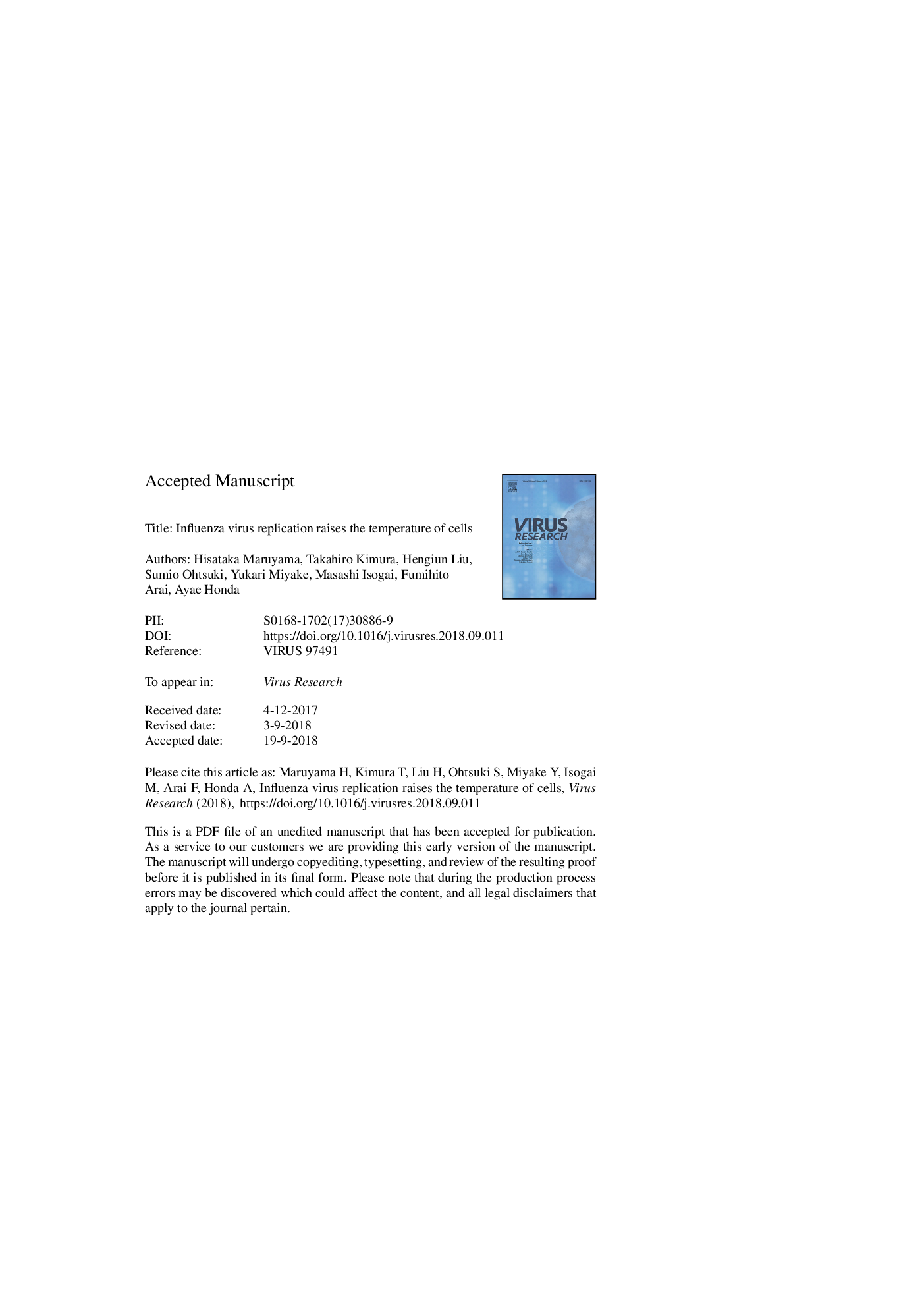| Article ID | Journal | Published Year | Pages | File Type |
|---|---|---|---|---|
| 11029042 | Virus Research | 2018 | 18 Pages |
Abstract
Multiplication of influenza virus requires metabolites, such as nucleotides and amino acids, as well as cellular machinery to synthesize its genome and proteins, thereby producing viral particles. Influenza virus infection forces the start of several metabolic systems in the cell, which consume or generate large amounts of energy. Thus, the viral multiplication processes involved in both genome replication and transcription are considered to require large numbers of nucleotides. The high-level consumption of nucleotides generates large amounts of energy, some of which is converted into heat, and this heat may increase the temperature of cells. To address this question, we prepared a tool based on rhodamine B fluorescence, which we used to measure the temperatures of influenza virus-infected and uninfected cells. The results indicated that influenza virus multiplication increased the temperature of cells by approximately 4â°Câ-â5â°C, ATP levels in the cells decreased at 3âh after infection, and mitochondrial membrane potential decreased with multiplication level. Thus, the increase in cellular temperature during influenza virus infection appears to be due to the massive consumption of ATP over a short period.
Related Topics
Life Sciences
Immunology and Microbiology
Virology
Authors
Hisataka Maruyama, Takahiro Kimura, Hengiun Liu, Sumio Ohtsuki, Yukari Miyake, Masashi Isogai, Fumihito Arai, Ayae Honda,
